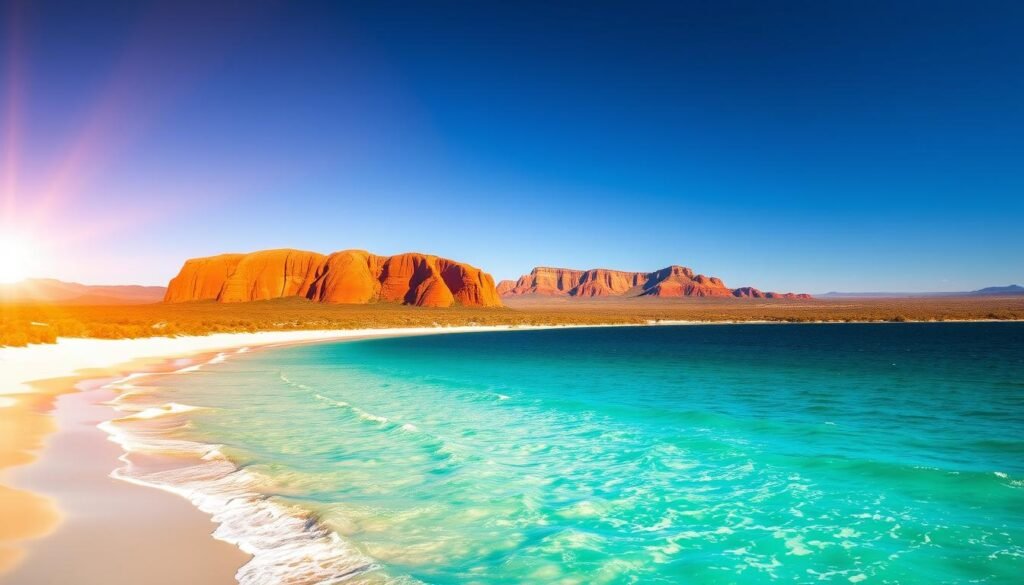Surprising fact: Australia spans eight climate zones and the Australian Alps receive more annual snowfall than Switzerland — a country known for skiing.
I write this guide from years of travel planning, and I define the best time for a trip by balancing crowds, cost, and comfort. For many visitors, the shoulder months — September through November and March through May — offer warm skies, open attractions, and fair hotel rates.
The Top End flips the script: its dry season runs May to October, while November to April brings dramatic storms and road closures. Summer months (December to February) draw big crowds and push hotel prices up about 25% in popular spots.
My aim is to help you match what you want — beaches, outback, reef, wine, or skiing — with the right months of the year. I’ll also preview region-by-region advice, festival timing, and tips for Americans flying long-haul so you can get the most out of every day on the ground.
Key Takeaways
- Shoulder seasons (spring and autumn) often balance value, comfort, and open attractions.
- Australia’s size means regional timing varies greatly — plan by region.
- Peak summer brings higher prices and busier beaches.
- Top End has a distinct dry and wet cycle with safety implications.
- Alpine winters offer real skiing; Perth is notably sunny in summer.
How Australia’s seasons work when you’re in the Northern Hemisphere
Since I live in the northern hemisphere, I always remind travelers that Australia runs on an inverted calendar. The key idea is simple: what feels like winter at home often lines up with Australia’s hottest months.
Understanding inverted months: summer in December–February, winter in June–August
December through February is Australian summer, and that brings the busiest crowds and higher prices. School holidays and beach culture drive demand, so flights and hotels climb fast.
June to August is generally the low season in the southern states. Days are cooler, some rain is possible, and you’ll find thinner crowds and lower rates. Expect milder temperatures for city sightseeing and alpine snows inland.
What shoulder seasons mean for crowds, prices, and weather
Shoulder months — March–May and September–November — often give the best balance. I see pleasant weather, open attractions, and better availability during these stretches.
“Book outside peak school holidays and you can save on flights without sacrificing good weather.”
| Period | Crowds | Typical weather | Price trend |
|---|---|---|---|
| Dec–Feb (summer) | High | Hot, sunny | Peak |
| Mar–May (autumn) | Moderate | Mild, pleasant | Lower |
| Jun–Aug (winter) | Low in the south | Cooler, wetter | Reduced |
| Sep–Nov (spring) | Moderate | Warming, clear | Value |
Use this simple framework when picking dates. If you want a quick reference for planning, see my best time guide for festival and school holiday notes.
The best time to visit Australia
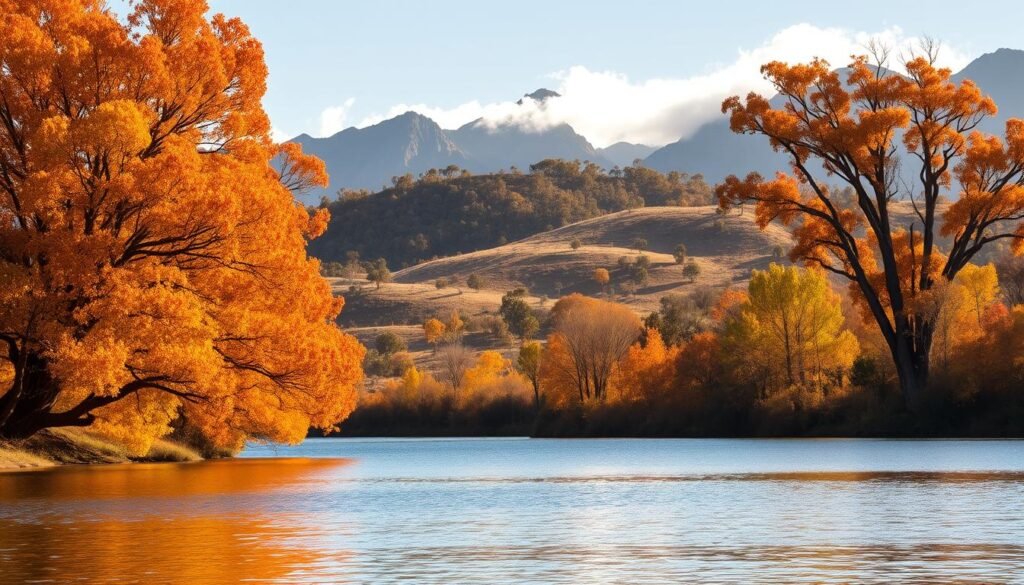
I focus on months that keep attractions open, crowds thin, and weather comfortable. For most travelers, september november and March–May hit that sweet spot: mild days, fewer lines, and fair hotel rates.
Why september november and March–May are sweet spots
Spring and autumn offer wide coverage across regions. The Top End is pleasant from March through September, while the Red Centre prefers March–November.
When summer makes sense and when it doesn’t
Summer (Dec–Feb) is ideal for beach-focused itineraries and big festivals, but expect crowds and about 25% higher hotel rates in hot spots. Avoid the tropical north and the outback in peak humidity and heat.
Matching your trip goals: beaches, wildlife, cities, or road trips
I map goals to months like this:
- Reef & snorkeling: shoulder months or autumn for visibility and fewer jellyfish.
- City culture & wine: spring and autumn for events and comfortable walking weather.
- Road trips & wildlife: plan around sunrise/sunset; transitional months lengthen golden hours for photos.
“Book popular spring and autumn events early — I lock accommodations well in advance.”
Packing tip: bring layers for warm days and cool nights, especially inland. For 2–3 week itineraries, sequence regions so you follow milder weather and avoid the extremes.
Season-by-season: weather, crowds, and costs
https://www.youtube.com/watch?v=lY08CI30qcU
My season guide focuses on practical rhythms—sunrise starts, siesta breaks, and evening strolls. I outline how each stretch of the year shapes daily plans, packing, and budget.
Spring (September–November)
Why go: mild weather, wildflowers, and thinner crowds. Iconic drives like the Great Ocean Road shine with clear days and better visibility.
Daily rhythm: comfortable mornings and warm afternoons—great for long drives and winery visits.
Summer (December–February)
Pros: long beach days and major city festivals. Cons: heat and humidity up north and hotel rates that can jump about 25% in popular spots.
Tip: plan early starts and mid-day rests to beat peak temperatures.
Autumn (March–May)
Festival season and wine harvests make this a lively stretch. Daytime temperatures favor walking tours and alfresco dining, while nights cool down.
Winter (June–August)
Winter splits the map: low season in the south means lower prices and fewer tourists. Up north, dry, sunny days are ideal for Kakadu and Darwin.
“Book alpine stays early for ski season—snow levels can surprise even seasoned travelers.”
- Packing: sun protection for warm months; layers for cool mornings and evenings.
- Money tip: hunt winter deals in southern cities; reserve alpine lodges ahead of ski opens.
Tropical North and the Top End: chasing the Dry season
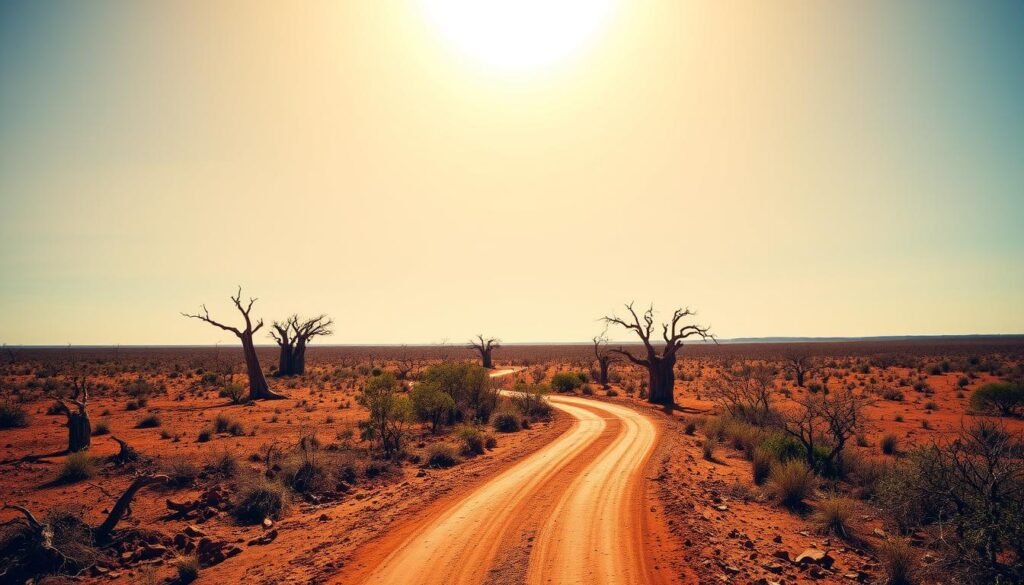
The Tropical North flips from bright, dry days into thunderous summer—so planning matters.
Dry season runs May–October and is when I target Darwin and Kakadu for hikes and 4WD trips. Humidity drops, road access improves, and national park tracks reopen for longer days in the field.
Dry season (May–October): Darwin, Kakadu, and outback roads open
Why go: lower humidity, reliable roads, and cooler mornings help with wildlife viewing and long drives.
Wet season (November–April): dramatic storms and lush landscapes
The wet brings heavy rain, swollen waterfalls, and emerald rivers. It also closes the Gibb River Road and parts of remote national park territory. I plan museum days and markets on stormy afternoons.
Cairns and the reef: visibility and stinger notes
For the great barrier reef, visibility often improves outside peak stinger season. I watch forecasted weather and check local ranger updates before reef trips.
| Period | Conditions | Access | Wildlife |
|---|---|---|---|
| May–Oct | Dry, lower temperatures, clearer days | Roads open, parks accessible | Active mornings, easy spotting |
| Nov–Apr | Hot, humid, frequent storms | Road closures likely | Abundant, but harder to reach |
| Cairns (shoulder) | Good visibility, fewer stingers | Boat trips steady | Reef life clearer |
“Plan around ranger updates and permit notices — they save you days and stress.”
Pack breathable layers, reef-safe sunscreen, insect repellent, electrolyte tabs, and a light rain shell. I build mornings for wildlife and late afternoons for photos, then slot in rest days when storms roll through. You can learn more about best-places-to-visit-in-march.
Red Centre and the Outback: Alice Springs and Uluru timing
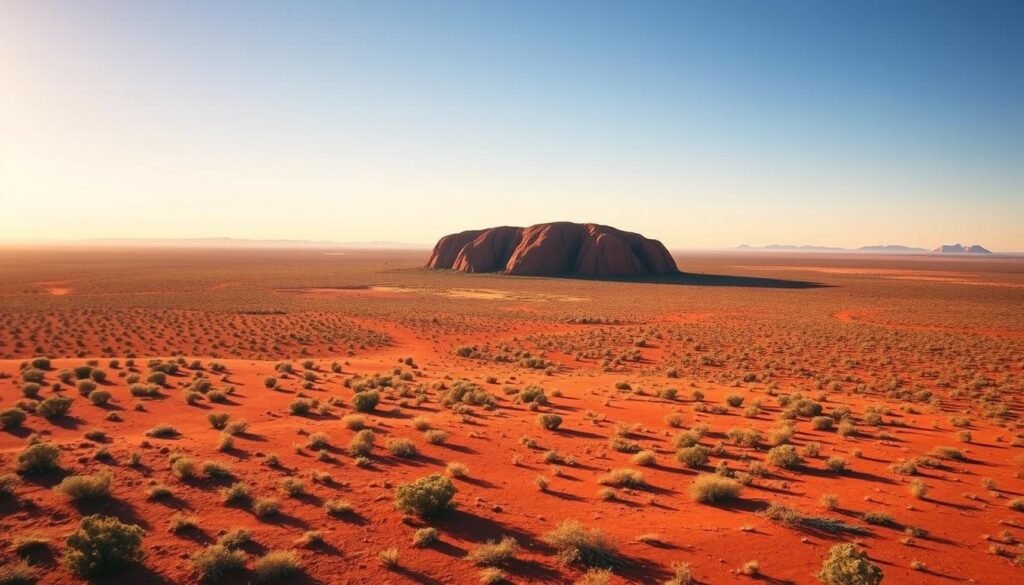
The Red Centre rewards visitors who plan around its long sunny days and chilly desert nights.
I recommend March–November as the clearest stretch for milder temperatures and crisp, star-filled nights. Winter brings pleasant daytime warmth for walks and very clear skies after dark.
Practical desert notes
I pack layers for big temperature swings: breathable shirts for the warm days and an insulated layer for cold nights. Sunscreen, a wide-brim hat, and at least 3 liters of water per person are non-negotiable.
Route and timing
Drive between Alice Springs, Kings Canyon, and Uluru‑Kata Tjuta National Park with planned fuel stops; some roads are unsealed and rental restrictions apply. I start hikes like Kings Canyon Rim Walk at first light to avoid harsh sun and to catch softer light for photos.
- Sunrise and sunset at Uluru and Kata Tjuta give the most dramatic color changes—plan short viewing windows.
- Book Anangu-led tours and visitor center talks for cultural depth during cooler parts of the day.
- Winter months are ideal for stargazing and astrophotography—avoid full-moon nights for best contrast.
“Lighter crowds and lower prices in shoulder season let you enjoy the landscape without midday stress.”
For detailed seasonal notes, see the Red Centre seasons guide.
East Coast highlights: New South Wales to Queensland
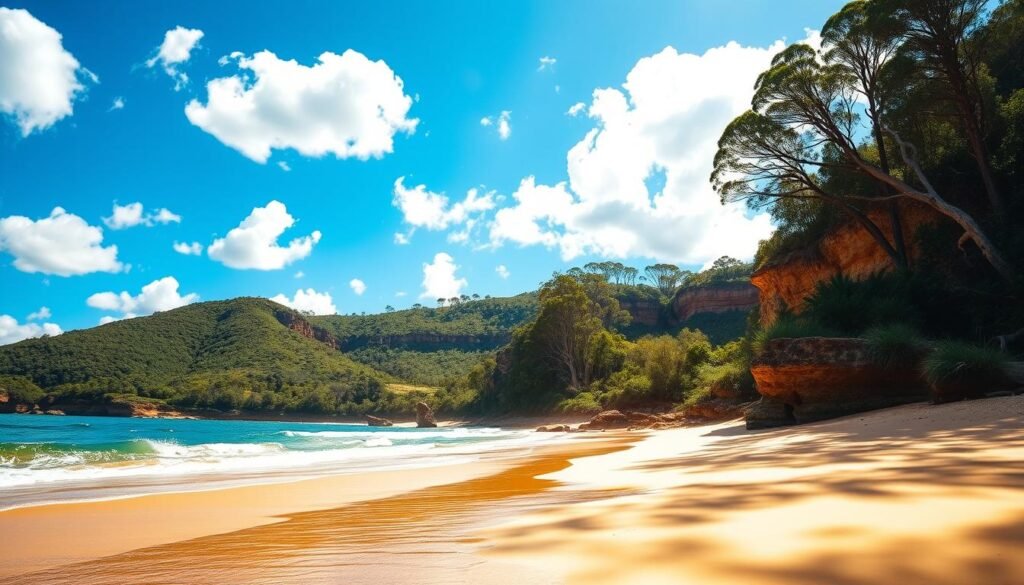
I outline practical windows for Sydney culture, Gold Coast surf, and east-coast whale watching so you can pick days that match your goals.
Sydney and New South Wales
Sydney and new south wales see their driest stretch from July through December. Clear-sky days favor bridge climbs, coastal trails, and harbor walks.You can learn more about best-places-to-visit-in-costa-rica.
Tip: Book harbor cruises and bridge climbs well ahead on popular days and aim for midweek slots to avoid crowds.
Gold Coast and Brisbane
Brisbane and central Queensland are driest from June through November. Those months give more stable beach conditions and cleaner surf windows.
Pair city mornings with afternoon coastal drives for a relaxed rhythm. Public transit links make one-way city-and-beach combos like Brisbane to the Sunshine Coast easy.
Whale watching (June–November)
June–November is prime for whale watching along the east coast. Whales head north June–August and return south september november.
Hotspots: Hervey Bay, Byron Bay, and Eden offer calm-bay cruises and headland viewpoints for breaches and tail slaps.
“Book whale tours around peak migration days and choose sheltered bays if you want steady viewing from a small craft.”
- Mix city and coast: Sydney to Byron or Brisbane to Sunshine Coast for varied days.
- Family picks: Taronga Zoo and South Bank lagoon work well when coastal weather turns breezy.
- Driving tip: avoid weekend bottlenecks by starting early and using ferries for scenic links.
Southern states, Victoria, and Tasmania: cool culture and alpine snow
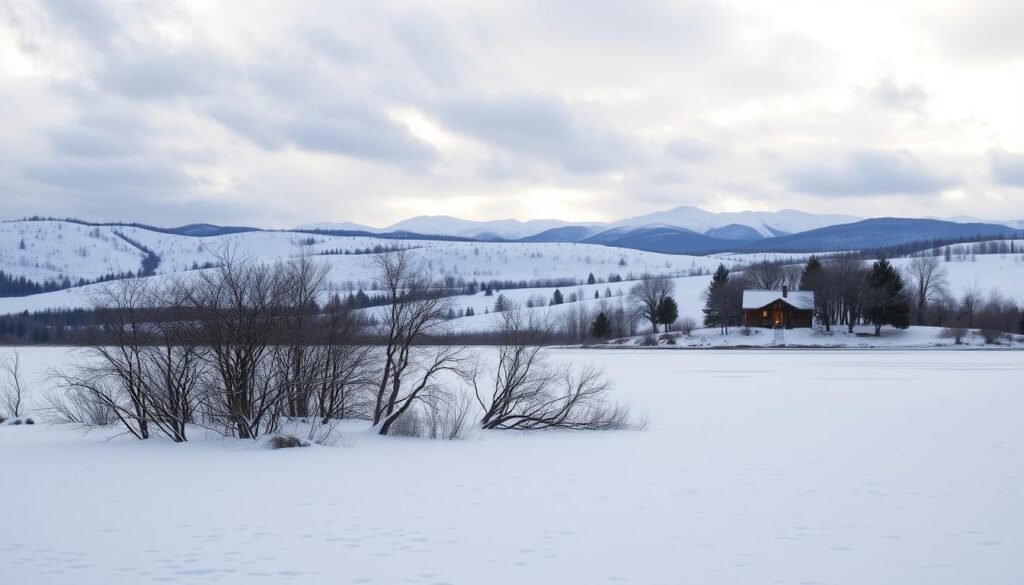
Cooler months in the southern states shift the rhythm toward indoor cafés, festival calendars, and snowy peaks. I plan Melbourne visits around spring and autumn for street art, coffee crawls, and fewer crowds.
Melbourne laneways and events in spring and autumn
Why go: spring and autumn give crisp mornings and long daylight for wandering laneways. I map coffee stops, galleries, and small music festivals into single days.
Tip: book shows and popular restaurants a few weeks ahead when festival schedules drop.
Ski season in the Australian Alps
The low season in the south runs June–August, and that also marks peak ski months. The Australian Alps often see more snowfall than Switzerland, so snow reliability is strong.
Logistics: book gear, transfers, and lift passes early. Look for mountain shuttles and pre-booked lessons if you want hassle-free powder days.
Tasmania’s crisp air and year-round light rainfall
Tasmania has light, occasional rainfall across the year, so packing layers and a compact rain jacket pays off. Hobart is notably less sunny than Perth, which shapes indoor museum and dining choices.
Lavender farms and coastal drives shine under clear, cool skies in shoulder months. For wildlife and short day trips, I pick quieter months and early starts.
| Focus | When | Why |
|---|---|---|
| City culture | Spring/Autumn | Fewer crowds, events, mild weather |
| Skiing | June–Aug | Reliable snow, strong resorts |
| Tasmania | Year-round | Light rainfall, crisp air, cozy dining |
“Cozy bistros, fireplaces, and short museum visits make cool evenings some of my favorite travel memories.”
Western Australia: Perth sunshine, Margaret River wines, Ningaloo’s whale sharks
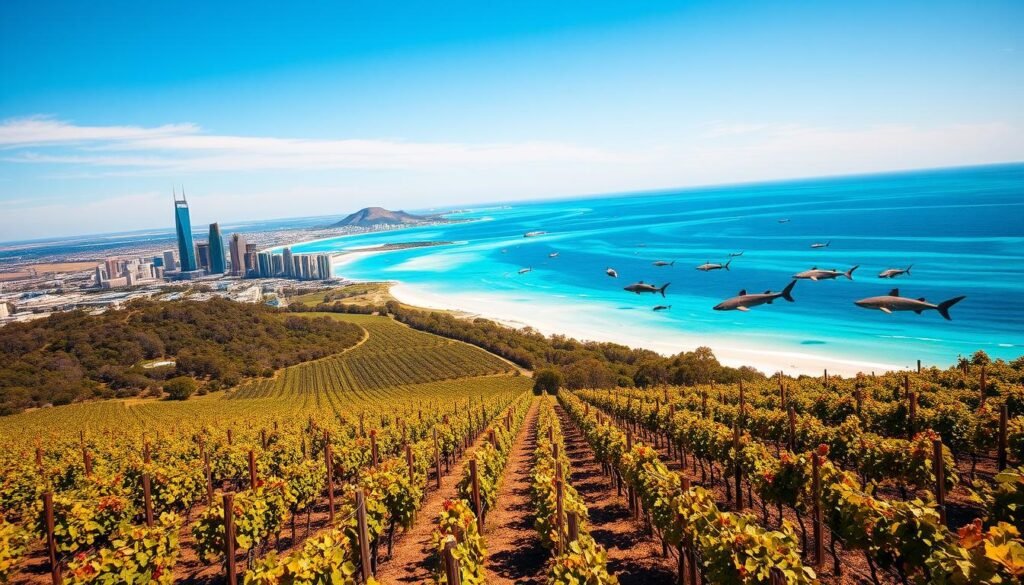
Wide skies and long coastal drives make Western Australia a tempting region for a mixed city-and-nature escape. I lay out practical windows so you can pack light and move fast.
Perth and the November–March dry spell
Perth enjoys about 3,200 hours of sun each year, and the dry spell from November–March is ideal for beach days, Rottnest Island, and outdoor dining. I schedule city mornings for markets and late afternoons for ocean swims.
Margaret River in autumn and spring
Autumn and spring are my picks for wine touring, forest drives, and surf breaks. Shoulder months often cut prices and crowds, so I book cellar doors midweek for a quieter visit.
Ningaloo Reef: whale sharks late March–late July
Swim-with-whale-shark trips run from late March through late July near Exmouth. I reserve spots well in advance and watch sea conditions—calmer water gives better visibility and steadier boat rides.
- Suggested route: Perth → Cervantes (Pinnacles) → Coral Bay → Exmouth with sensible drive days.
- Packing: high-SPF sunscreen, wind layer, and a light jacket for cool Indian Ocean evenings.
- Note: winter rainfall in June–July can affect southwest roads and coastal cliffs.
| Focus | When | Why |
|---|---|---|
| Perth city & beaches | Nov–Mar | Dry, sunny days; outdoor dining |
| Margaret River | Autumn & Spring | Wineries, surf, forest drives |
| Ningaloo Reef | Late Mar–Late Jul | Whale sharks; good sea conditions |
“Combine a few city days with coastal drives for a balanced Western Australia escape.”
Cities, festivals, and road trips: timing your experiences
![]()
I plan city stays around major festivals and scenic drives so you get culture without burnout. Big events and coastal legs set the pace for many of my itineraries, and a little sequencing goes a long way.
Adelaide’s Mad March—how I sequence it
Mad March packs Adelaide Fringe (mid-February–mid-March), the Adelaide Festival, WOMADelaide, and Writers’ Week into a short window.You can learn more about best-places-to-visit-in-january.
I stagger shows and market mornings, book one big event per day, and add quiet museum or wine stops between headline gigs. That keeps energy up without festival fatigue.
Sydney Festival and Australia Day logistics
Sydney Festival runs in January with headline performances across the harbor. I book prime slots early and pair evening shows with a harbor stroll.
Australia Day (January 26) brings fireworks and big crowds. Expect transit changes, arrive early for views, and pick less crowded vantage points if you want calmer celebrations.
Great Ocean Road and Melbourne Cup notes
Drive the Great Ocean Road in spring or autumn for softer light, calmer traffic, and relaxed stops at the Twelve Apostles. These are among the best times for coastal photos and smoother parking.
The Melbourne Cup lands on the first Tuesday in November—a national event. If you don’t have track tickets, book a central pub or racing precinct early. Dress codes and road closures mean plan your arrival and transport in advance.
“Book festivals and hotels early; central locations save travel stress and let you enjoy more events.”
| Focus | When | Practical tip |
|---|---|---|
| Adelaide festivals | Feb–Mar | Stagger shows; reserve ahead |
| Sydney Festival & Australia Day | Jan (26) | Book performances; expect transit changes |
| Great Ocean Road | Spring/Autumn | Drive early; avoid midday traffic |
| Melbourne Cup | First Tue in Nov | Secure a viewing place or book a race-day venue |
Conclusion
Quick roadmap: I recommend shoulder seasons—September–November and March–May—for value, milder weather, and open attractions. For reef clarity or whale encounters, match months to the region. The great barrier reef and Ningaloo have narrow windows for peak wildlife viewing.
If you crave dry landscapes, head north in the dry season (May–October). If you plan skiing, pick australia winter in the Alps. For festivals or beaches, book earlier and accept higher prices in summer months.
Packing & booking checklist: sunscreen and layers, reserve flights 3–6 months out, lock tours and car hire 2–4 months ahead, and grab event tickets as soon as dates drop.
Personalize this guide by your pace and interests, and you’ll get more great days on the ground.


